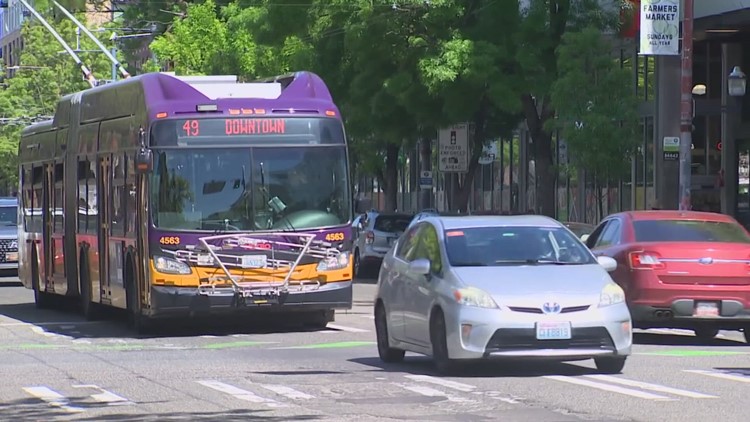SEATTLE — The Seattle Department of Transportation (SDOT) has released the Climate Change Response Framework, outlining the prioritized solutions to reduce emissions and make travel within the city more sustainable.
Transportation accounted for approximately 60% of Seattle's greenhouse gas emissions, according to the most recent Community Greenhouse Gas Inventory.
In addition to the solutions, the framework also puts a large emphasis on climate justice and equity for historically underserved groups to reduce long-term climate impacts.
"These impacts are often coupled with worsened health effects due to disproportionate exposure to pollution from fossil-fuel powered cars and trucks," the report states.
The report outlined six strategies in order to meet emission goals:
Create a culture of climate action and optimism at SDOT
SDOT wants to expedite project and pilot deliveries internally, as well as improve communication and share more information with other city departments, partners and the public about its work on climate action.
Enable the use of climate-friendly travel choices
This strategy includes increasing the rates for on-street parking and the commercial parking tax, as well as expanding paid on-street parking spots to disincentive car trips.
Make short trips safe, affordable and zero-emission
This includes implementing low-pollution neighborhoods, which have increased spaces for people to gather within communities and are safe for walking, biking and transit. In addition, SDOT said it hopes to expand the free-floating bike share program started in 2017, and the scooter program in 2020.
The department is aiming to have the bike and scooter share companies provide more discounted prices for low-income residents, "expanding this program could offer unlimited free rides to all qualifying residents, with the City contributing additional funding to supplement vendor programs," the report reads.
Improve freight efficiency
SDOT wants to make deliveries across the city more efficient by creating a digital permit for commercial vehicles and increasing the number of commercial vehicle loading zones to decrease the backup caused by delivery drivers double parking in travel lanes. This is in hopes of decreasing congestion and pollution from idling trucks.
Make it more convenient, reliable and affordable to ride transit
This strategy includes installing bus-only lanes at a faster pace, increasing the reach of Reduced Transit Fare programs and bus service routes and supporting Sound Transit with the expansion of the Link Light Rail Network.
Electrify Seattle
SDOT said it wants to support the electrification of personal cars, freight vehicles, and shared mobility vehicles, and transition to zero-emissions transit. It also plans to electrify the city's bus fleet.
For more information about the new response framework, check the SDOT website.



